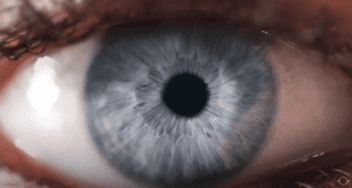What Causes Kaleidoscope Vision?
Home / Neurological Disorders / Ocular Migraines /
Last Updated:
Table of Contents
Migraines, especially ocular migraines, are the most common cause of kaleidoscope vision. This type of visual change is often one of the first signs that a migraine is coming.
Symptoms of anxiety, including hyperactivity and hyperarousal, are also known to cause kaleidoscope vision. As your anxiety dissipates, so should your kaleidoscope vision.
Kaleidoscope vision refers to visual disturbances similar to what you see when you look through a kaleidoscope. Images are fractured, colorful, bright, and often changing.
Although scientists are working on it, there are no absolute treatments for migraines or kaleidoscope vision. Some medications can be used to successfully treat migraines before they develop and while they are happening.
If you start to get kaleidoscope vision, take immediate steps to prevent the symptoms from getting worse. Reduce exposure to light and sounds, and take aspirin, ibuprofen, or another medication, to keep migraine symptoms to a minimum.

What Is Kaleidoscope Vision?
Kaleidoscope vision, sometimes referred to as kaleidoscope ocular migraine, is a type of aura that most commonly occurs as a symptom of a migraine.
According to the National Headache Foundation (NHF), about 20 percent of people who get migraines experience auras. Auras typically last about 20 minutes, though they can last up to an hour. They usually happen before a migraine sets in.
You deserve clear vision. We can help.
With 135+ locations and over 2.5 million procedures performed, our board-certified eye surgeons deliver results you can trust.
Your journey to better vision starts here.
Auras like kaleidoscope vision are caused by hyper-excited nerves in the brain that are activated before the sense of pain is experienced. When the nerves are activated in the visual processing parts of the brain, this is when visual auras occur.
In the event of kaleidoscope vision, a person will see fractured, colorful images, like what you see when you look through a kaleidoscope. At the same time, they may see pulsing, flashing, vibrating, or shimmering images.
Lights and images of different colors and intensities can also occur. For people who get kaleidoscope vision, it can feel like they are watching a light show.
Migraines & Kaleidoscope Vision
Migraines and kaleidoscope vision are closely related, as kaleidoscope vision is frequently an early symptom of a migraine. Migraines, specifically ocular migraines, are the most common cause of kaleidoscope vision.
As kaleidoscope ocular migraines develops, you will likely see symptoms in both eyes, though the images may only appear in parts of your visual field.. The images may move around and change color and shape. If you see the images in both eyes, the kaleidoscope vision is most likely caused by an ocular migraine, which impacts the part of your brain responsible for vision.
While migraines are the most common cause of kaleidoscope vision, the visual disturbance could be caused by more serious health conditions, such as a stroke or brain damage. If symptoms persist or worsen, seek medical care right away.
How Anxiety Is Related
In addition to migraines, the Anxiety Centre explains that kaleidoscope vision can be caused by anxiety. Visual irregularities, like kaleidoscope vision, are common symptoms of anxiety disorder, panic attacks, and hyperstimulation.
Kaleidoscope vision as a result of anxiety can be caused by:
- Activation of the body’s fight-or-flight stress response.
- Overly apprehensive behavior.
- Stress-response hyperstimulation.
- Hyperarousal or nervous system dysregulation.
- Changes to an active stress response.
As long as the body is overly stimulated, kaleidoscope vision and other disturbances can remain. As the body becomes less stimulated and returns to a normal state, the visual symptoms of hyperstimulation gradually go away. Fortunately, kaleidoscope vision, while off-putting, is not itself dangerous.
You deserve clear vision. We can help.
With 135+ locations and over 2.5 million procedures performed, our board-certified eye surgeons deliver results you can trust.
Your journey to better vision starts here.
Treatment Options
There are no absolute treatment options for kaleidoscope ocular migraines.
Researchers continue to work on gaining a better understanding of the cause of migraines and effective treatment options. The two current treatment approaches are to prevent attacks before they start or treat the symptoms once they’ve developed.
Through the use of medications and behavioral changes, the following methods can help treat migraines:
- A drug called Aimovig (erenumab) can help prevent migraines in adults.
- A drug called Reyvow (lasmiditan) is approved for the short-term treatment of migraines, with or without aura.
- Ubrelvy (ubrogepant tablets) is approved for the immediate treatment of migraines, with or without aura.
- Drugs originally approved for the treatment of depression, high blood pressure, and epilepsy have been shown to be highly effective at treating migraines.
- Botulinum toxin A can help to prevent chronic migraines.
- Stress management techniques, such as regular exercise, relaxation techniques, and biofeedback mechanisms, can help to reduce the frequency and severity of migraines.
- Diet, hydration, consistent sleep, and medications can all impact the occurrence of migraines.
- Hormone therapy can help women who experience migraines associated with their menstrual cycle.
- Weight loss can improve migraines in people who are overweight.
In the case of an acute attack, medications such as sumatriptan, ergotamine drugs, ibuprofen, and aspirin, can alleviate symptoms. It is best to take these mediations as soon as you notice symptoms of a migraine coming on in order for them to be most effective.
What to Do When You Get Kaleidoscope Vision

When you start to get kaleidoscope vision, it is important to take measures right away to prevent the aura and potential migraine from getting worse. Preventative measures, beyond taking medications, to reduce the severity of a migraine include:
- Lying down in a dark, quiet room.
- Massaging your scalp.
- Applying a damp, cold compress to your forehead or the back of your neck.
While there is no cure for kaleidoscope vision or migraines, there are many techniques available to help you manage the condition. If you frequently experience kaleidoscope vision and suffer from migraines, talk to your doctor about establishing a treatment plan to effectively manage your symptoms.
You deserve clear vision. We can help.
With 135+ locations and over 2.5 million procedures performed, our board-certified eye surgeons deliver results you can trust.
Your journey to better vision starts here.
References
- Aura. National Headache Foundation.
- Migraine Information Page. (December 2019). National Institute of Neurological Disorders and Stroke.
- Kaleidoscope Vision Anxiety Symptoms. (November 2020). Anxiety Centre.
- Visual Disturbances. (February 2016). American Migraine Foundation.
- What Is Kaleidoscope Vision? (July 2019). Medical News Today.
This content is for informational purposes only. It may have been reviewed by a licensed physician, but is not intended to serve as a substitute for professional medical advice. Always consult your healthcare provider with any health concerns. For more, read our Privacy Policy and Editorial Policy.